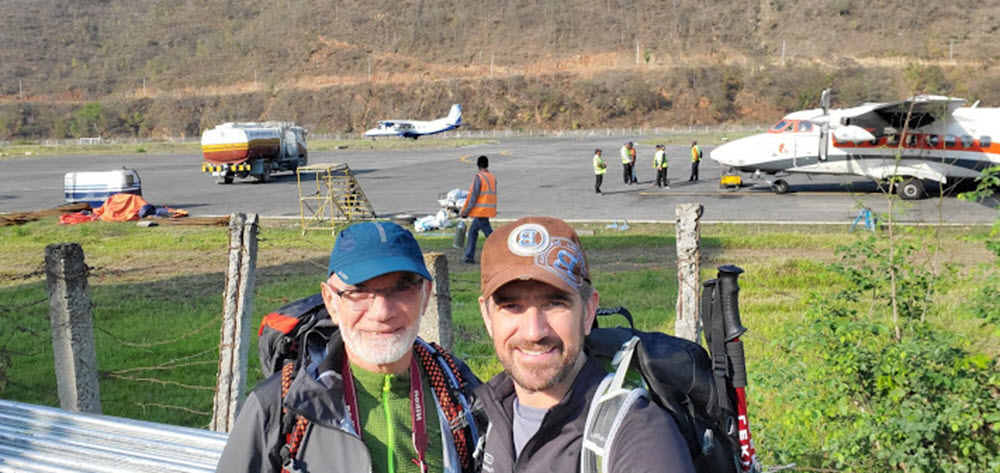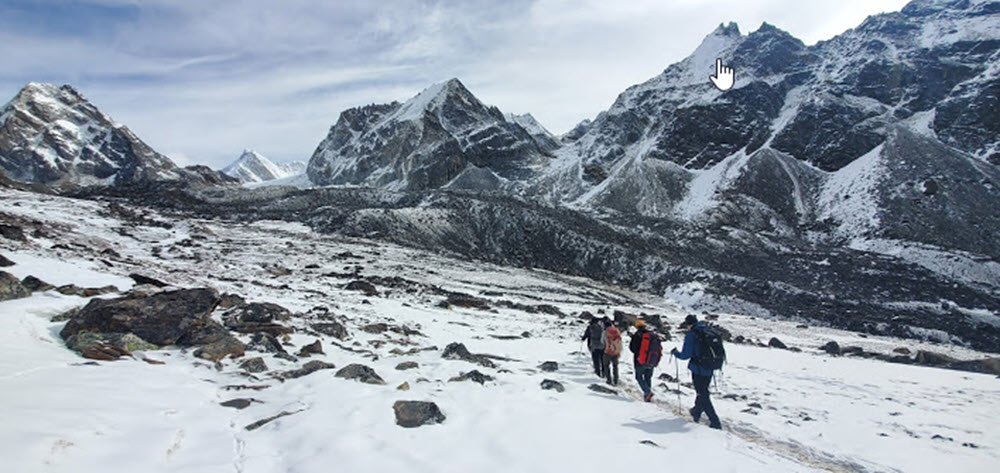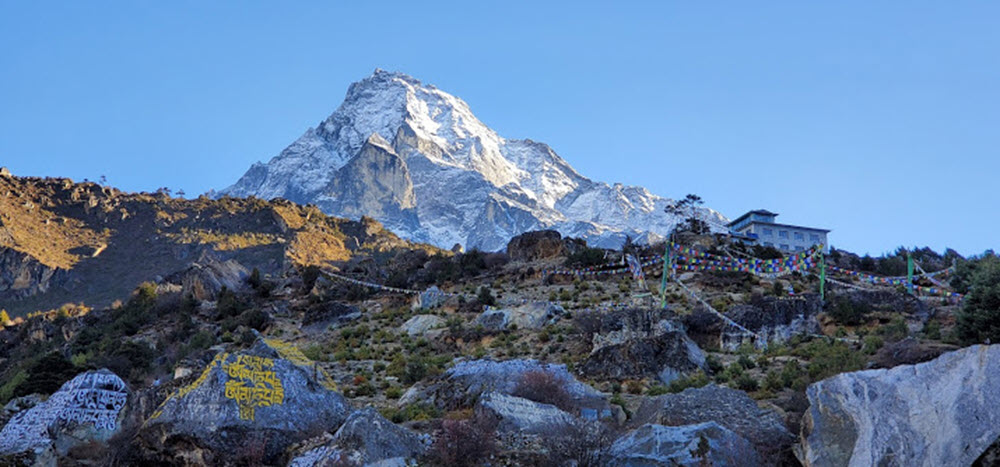We spoke with Benjamin Champagne the Co-Founder and Director of VitrineMedia Canada, on his recent accomplishment of the Mount Everest Base Camp Trek, that he completed with his father.
Born and raised in France, Benjamin was instrumental in the creation of VitrineMedia in 2007, and broke new ground with the transformation of real estate agencies with their backlit LED Window solutions. Since then over a million LED Displays have been manufactured and sold globally.
It seems Benjamin’s love of a challenge, and his commitment and determination is not only restricted to his work life, as he has just taken on the challenge, along with his father, of completing the renowned Mount Everest Base Camp Trek.
Benjamin is currently living along with his family in Vancouver, Canada where he heads up VitrineMedia Canada.

Where exactly did you go? Why? and for how long?




We went to Nepal which is a trekker’s paradise and did the base camp of Mount Everest trek. The trip started with the touchdown at the little airport of Lukla in the Khumbu region. This stands at just under 2 500 meters, and we hiked from there to the Kala Patthar peak above Everest Base Camp, which stands at around 5 600 meters.
The whole trip took roughly 2 weeks, and we went because I wanted to show my father the top of the world!
Tell us what an average day would involve?




The average day would involve a lot of walking! We would spend around 5 – 8 hours a day walking. We would take a packed lunch every day, bread maybe an egg and some biscuits. We would walk on average 15 kms per day.
It was not that cold, the averages temperatures around 8 degrees during the day, the nights colder at around -4 or -5, so cold but bearable. Well for a french man living in Canada, bearable!
The highest point we reached was 5 600 meters high, that was at Kala Patthar peak above Mount Everest Base Camp. Unfortunately that day the weather was not good so we were not able to see Mount Everest at all from there.
Where did you sleep and what was the accommodation like?




We stayed in trekking lodges, known as teahouses, that were very basic. These tea houses are built and managed by local villagers.
The bedrooms consisted of tiny single rooms, which offer a basic wooden bed and mattress. Only the communal area would have heating. The bedrooms at night were freezing cold, but the communal area was at least heated.
How cold was it really?



I am a french man living in Canada, and am pretty accustomed to the cold, so did not find it that bad. During the days the average temperatures were around 8 degrees, and for me that is bearable. You are also walking and active, so don’t notice the cold too much.
The nights were a lot harder. The only place in the lodges that we stayed in that had any form of heating was in the communal area, the bedrooms themselves were freezing. The average temperate at night inside the bedrooms was around -2. Sleeping was a problem for me, although this was more related to the change in altitude than the cold.
What was the hardest part of your trip?




I suppose everybody is different, but for me it was the food. The food was very basic, mainly potatoes, pasta and rice. No deviation. Very little meat, fruit and vegetables. We would also eat pretty much the same food every day, it was hard to adjust to, especially when being so physically active.
Nepal ranges from 60 meters above seal level to Mount Everest which is over 8 800 meters, and all the food has to be carried in, and there is limited access to meat, fruit etc.
The average meal would consist of either pasta or rice, with a small amount of vegetables in a sauce. I think if we had not been so physically active I would have handled the diet better, but found it really did not help with my energy levels etc.
Was altitude a problem?




The altitude was manageable, as the elevation speed not so fast. We started at 2 400 meters and climbed to 5 600 meters in 13 days. Your heart rate does go faster and you get less oxygen, so can feel a little breathless at times but it was not bad. I for some reason struggled with it more at night, and really struggled to sleep.
Altitude sickness generally affects people from an elevation of around 2400 meters above sea level, but because we were trekking relatively slowly it was not that much of a problem.
What are the people and the culture like?




Nepal is a very poor country, with simple hardworking people. The people live in basic houses made of stone and mud bricks. Many of the houses contain only two rooms, a sleeping room and a room for cooking.
The people living in Himalayas of Nepal must be some of the most hardworking in the world. Women carry around around 50 kgs with ease and men around 70 kgs. The biggest load I saw being carried around was 130 kgs.
They are very religious and many are either Hindu or Buddhist’s. There are numerous temples, some of which you see on the trek which were amazing. The temples are steeped in tradition, history and beautifully decorated.
Religion very important to the people of Nepal. Living in the mountains in what can be a very dangerous environment, religion plays a very important role in their day to day lives.
Do you need to be super fit to manage a trek like this?




We were in a group of 7 people, and everyone was in shape. However you do you not have to be super fit, but do need to be relatively strong and fit. There were however, one or two passes that were more difficult to manage, mainly because of the weather.
It is not necessary to have to know a specific technique or to be skilled in climbing or have mountaineering skills, in order to do the Everest Base Camp trek, but you do need to be relatively fit.
It is important to remember that the terrain is rocky and snowy, so you need to be able to manage the conditions which does require a certain amount of physical strength and fitness.
If you are fit enough to walk between 5 – 7 hours a day and relatively agile you should be just fine.
What did you miss most from home? And would you do it again?
For sure I would do it again, it was an amazing never to be forgotten experience, but having mastered a 5 600 meter trek, I would probably rather do a 8 000 meter peak, maybe next time the Cho Oyu.
To be honest I loved the trip, and missed very little from home, except my family and a glass of cold beer!


Leave a Reply